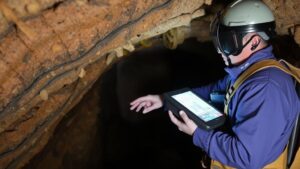Analyzing celestial navigation tools used by ancient builders of tunnel systems.
Analyzing Celestial Navigation Tools Used by Ancient Builders of Tunnel Systems
Celestial navigation is a method that utilizes astronomical bodies, such as stars and planets, for locating positions on Earth. Although predominantly known in the context of maritime exploration, this ancient technique also played a crucial role in guiding the builders of complex tunnel systems throughout history. These builders, often with limited tools, leveraged their understanding of the cosmos to align and construct subterranean structures with remarkable precision. This article explores their navigation techniques, specific tools used, and notable examples of ancient tunnel systems across the globe.
The Importance of Celestial Navigation
Celestial navigation served as a vital tool for ancient cultures. It provided a way to ascertain geographic orientation and construct accurately aligned tunnels which were crucial for religious, cultural, or practical reasons. The ability to navigate by the stars helped builders ensure that their tunnels reached their intended destinations while maintaining structural integrity.
Key Celestial Navigation Tools
Ancient builders employed various celestial navigation tools that allowed them to align their structures with the night sky. e tools included:
- Astrolabe: This ancient device, popularized by the Greeks and later refined by Islamic scholars, allowed users to measure the altitude of celestial bodies, aiding in determining latitude.
- Gnomon: A simple yet effective tool, often a vertical stick or pillar, used to cast shadows which indicated the position of the sun at different times, assisting in solar alignments.
- Star Charts: Reference maps depicting the positions of various stars, which were used for navigation and planning alignments based on celestial events.
- Sun Compasses: Employed primarily in northern regions, these compasses tracked the suns movement across the sky to assist in directional alignment.
Examples of Ancient Tunnel Systems
Many ancient civilizations utilized celestial navigation techniques in the construction of elaborate tunnel systems. Here are some significant examples:
The Catacombs of Paris, France
Dating back to the late 18th century, the Catacombs of Paris were constructed to address the overflow of cemeteries in the city. While primarily a burial site, the tunnels showcase alignment techniques that may have used celestial navigation concepts. intricate structure of the catacombs extends over 200 miles and possesses sections that align with the stars overhead, which may have had spiritual significance.
The Cappadocia Underground Cities, Turkey
The underground cities in Cappadocia, with their origins tracing back to ancient Hittite times (around 1200 BCE), feature a fascinating network of tunnels and chambers. There are indications that builders aligned the entrances to these subterranean structures with certain celestial bodies, potentially for both practical navigation and ritualistic purposes. The incredible depth and complexity of these systems, which include ventilation shafts, indicate a sophisticated understanding of both architecture and celestial alignment.
Modern Applications and Lessons
The analysis of celestial navigation tools and ancient tunnel systems provides valuable insights for modern architects and engineers. Understanding how past civilizations overcame technological limitations to achieve their goals can inspire contemporary problem-solving approaches. Key lessons include:
- Integration of Multiple Disciplines: Ancient builders combined astronomy, geography, and architecture–an approach that can be mirrored in modern interdisciplinary projects.
- Emphasis on Alignment: The focus on aligning structures with significant celestial events can inform modern practices in environmental design focusing on sustainability.
- Respect for Cultural Significance: Acknowledging the cultural and spiritual contexts of construction can enhance contemporary projects by embedding deeper meaning into architectural designs.
Conclusion
The exploration of celestial navigation tools used by ancient builders of tunnel systems reveals a rich tapestry of human ingenuity and adaptability. With their reliance on the stars, these cultures not only navigated the physical world but also crafted environments that resonated with their beliefs and practices. Modern engineers and architects can continue to learn from these innovations, blending ancient wisdom with contemporary technology to create works that are both functional and meaningful.



